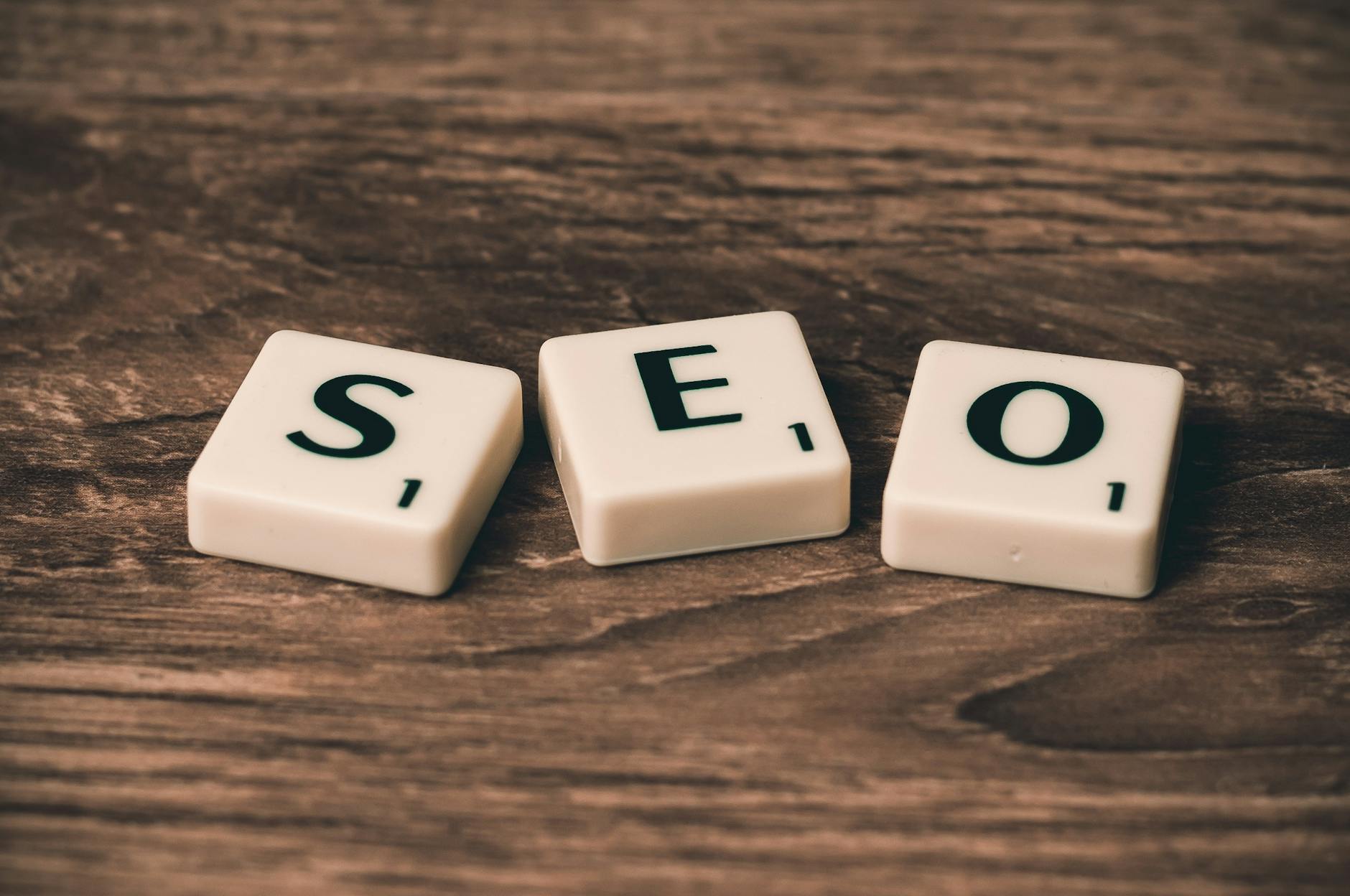SEO vs SEM: Which is Right for Your Business?
Are you struggling to boost your online visibility and attract more customers to your business? 🤔 In today’s digital landscape, two powerful strategies stand out: SEO (Search Engine Optimization) and SEM (Search Engine Marketing). But which one is the right fit for your business?
Imagine having a secret weapon that could propel your website to the top of search results, drive targeted traffic, and skyrocket your conversions. Both SEO and SEM offer this potential, but they operate in different ways and yield distinct results. Understanding the nuances between these two approaches is crucial for making informed decisions about your digital marketing strategy.
In this comprehensive guide, we’ll dive deep into the world of SEO and SEM, exploring their benefits, advantages, and key factors to consider when choosing between them. We’ll also share insights on implementing effective SEO strategies and running successful SEM campaigns. By the end, you’ll have a clear understanding of how to leverage these powerful tools to maximize your online presence and achieve your business goals. Let’s get started! 💪

Understanding SEO and SEM
Defining SEO: Organic search strategy
Search Engine Optimization (SEO) is a long-term strategy focused on improving a website’s visibility in organic search results. It involves optimizing various on-page and off-page elements to increase a site’s relevance and authority for specific keywords.
Defining SEM: Paid search advertising
Search Engine Marketing (SEM) refers to paid advertising within search engine results pages (SERPs). This typically involves running pay-per-click (PPC) campaigns through platforms like Google Ads or Bing Ads.
How they complement each other
SEO and SEM work together to create a comprehensive search marketing strategy:
- SEO builds long-term organic visibility
- SEM provides immediate visibility for targeted keywords
- Combined, they increase overall search presence and brand awareness
Key differences between SEO and SEM
| Aspect | SEO | SEM |
|---|---|---|
| Cost | Time-intensive, lower direct costs | Immediate costs per click or impression |
| Timeline | Long-term results (months to years) | Immediate results |
| Targeting | Broader keyword focus | Precise keyword and audience targeting |
| Sustainability | Results can be long-lasting | Stops when ad spend ends |
| Control | Less control over specific rankings | Full control over ad placement and budget |
Both SEO and SEM play crucial roles in digital marketing, offering different advantages and challenges. While SEO focuses on building organic authority over time, SEM provides immediate visibility for specific keywords and audiences. Understanding these differences is key to developing an effective search marketing strategy tailored to your business goals and resources.

Benefits of SEO for businesses
SEO offers numerous advantages for businesses looking to establish a strong online presence. Let’s explore the key benefits:
A. Local search optimization
Local SEO helps businesses target customers in specific geographic areas. By optimizing for local searches, companies can:
- Appear in Google’s “Local Pack” results
- Improve visibility on Google Maps
- Attract customers searching for nearby products or services
B. Improving user experience
SEO practices often align with user experience improvements, such as:
- Faster page loading times
- Mobile-friendly design
- Easy-to-navigate website structure
These enhancements not only boost search rankings but also increase user satisfaction and engagement.
C. Building brand credibility and trust
High search engine rankings can significantly impact brand perception:
| Benefit | Description |
|---|---|
| Authority | Top search results are often viewed as industry leaders |
| Trustworthiness | Users tend to trust organic search results more than paid ads |
| Visibility | Consistent high rankings increase brand recognition |
D. Cost-effectiveness over time
While SEO requires initial investment, it offers long-term benefits:
- Reduced reliance on paid advertising
- Continuous organic traffic without ongoing costs
- Higher ROI compared to many traditional marketing methods
E. Long-term organic traffic growth
SEO provides sustainable traffic growth:
- Compounding effect: As content ranks higher, it attracts more backlinks and social shares
- Evergreen content: Well-optimized content can continue driving traffic for years
- Multiple entry points: Diverse content allows businesses to rank for various keywords
With these benefits in mind, it’s clear that SEO can be a powerful tool for businesses. However, it’s important to consider how SEM might complement or even outperform SEO in certain situations. Let’s explore the advantages of SEM in the next section.

Advantages of SEM for businesses
Now that we’ve explored the benefits of SEO, let’s turn our attention to the advantages of Search Engine Marketing (SEM) for businesses. SEM offers several unique benefits that can significantly impact a company’s online presence and bottom line.
A. Flexibility in budget allocation
One of the most attractive features of SEM is its flexibility in budget allocation. Businesses can:
- Set daily or monthly budgets
- Adjust spending in real-time
- Scale campaigns up or down based on performance
This adaptability allows companies to optimize their marketing spend and respond quickly to market changes or business needs.
B. Measurable ROI and performance tracking
SEM provides unparalleled insights into campaign performance, enabling businesses to:
- Track conversions and ROI with precision
- Analyze key metrics such as click-through rates and cost-per-click
- Make data-driven decisions to improve campaign effectiveness
| Metric | Description | Importance |
|---|---|---|
| CTR | Click-Through Rate | Measures ad relevance and appeal |
| CPC | Cost-Per-Click | Indicates efficiency of ad spend |
| Conversion Rate | Percentage of clicks that lead to desired actions | Measures campaign effectiveness |
C. Precise targeting options
SEM offers advanced targeting capabilities, allowing businesses to reach their ideal audience with remarkable accuracy:
- Geographic targeting
- Device targeting
- Demographic targeting
- Behavioral targeting
- Keyword targeting
This level of precision ensures that marketing budgets are spent on reaching the most relevant potential customers.
D. Immediate visibility and results
Unlike SEO, which can take months to show results, SEM provides:
- Instant visibility on search engine results pages
- Immediate traffic to websites or landing pages
- Quick feedback on ad performance and campaign effectiveness
This immediacy is particularly valuable for new businesses, product launches, or time-sensitive promotions.
With these advantages in mind, SEM can be a powerful tool for businesses looking to quickly establish a strong online presence and drive targeted traffic to their websites. However, the choice between SEO and SEM isn’t always straightforward. In the next section, we’ll explore the factors to consider when deciding which approach is right for your business.

Factors to consider when choosing between SEO and SEM
When deciding between SEO and SEM for your business, several key factors come into play. Let’s explore these crucial elements to help you make an informed decision.
A. Competition analysis
Before diving into SEO or SEM, it’s essential to analyze your competition. Consider the following:
- Search engine rankings of competitors
- Their paid advertising strategies
- Content quality and quantity
| Aspect | SEO Consideration | SEM Consideration |
|---|---|---|
| High competition | Long-term strategy needed | Immediate visibility possible |
| Low competition | Easier to rank organically | Lower cost-per-click |
B. Time frame for results
The timeline for seeing results differs significantly between SEO and SEM:
- SEO: Typically takes 3-6 months for noticeable results
- SEM: Immediate visibility and traffic
C. Budget constraints
Your available budget plays a crucial role in choosing between SEO and SEM:
- SEO: Higher initial investment, lower long-term costs
- SEM: Ongoing costs based on ad spend
D. Target audience behavior
Understanding your audience’s online behavior is crucial:
- SEO: Best for informational searches and building trust
- SEM: Ideal for capturing users with high purchase intent
E. Business goals and objectives
Align your choice with your business objectives:
- Short-term sales boost: SEM might be more suitable
- Long-term brand authority: SEO could be the better option
By carefully considering these factors, you can determine whether SEO, SEM, or a combination of both is right for your business. Next, we’ll delve into implementing an effective SEO strategy to maximize your online presence.

Implementing an effective SEO strategy
Now that we’ve explored the benefits of SEO and SEM, let’s dive into how to implement an effective SEO strategy for your business. A well-rounded SEO approach encompasses several key elements:
A. Link building and off-page SEO
Building high-quality backlinks is crucial for improving your website’s authority and search engine rankings. Some effective link building strategies include:
- Guest posting on reputable industry blogs
- Creating shareable infographics and visual content
- Participating in industry forums and discussions
- Leveraging social media to promote your content
B. Content creation and optimization
Creating valuable, relevant content is the foundation of any successful SEO strategy. Here’s a comparison of different content types and their SEO benefits:
| Content Type | SEO Benefits |
|---|---|
| Blog posts | Targets long-tail keywords, increases organic traffic |
| Videos | Improves user engagement, boosts time on site |
| Infographics | Attracts backlinks, enhances social sharing |
| Case studies | Establishes authority, targets industry-specific keywords |
C. On-page SEO techniques
Optimizing your website’s structure and content is essential for improving search engine visibility. Key on-page SEO techniques include:
- Optimizing title tags and meta descriptions
- Using header tags (H1, H2, H3) effectively
- Improving page load speed
- Ensuring mobile-friendliness
- Implementing schema markup
D. Keyword research and optimization
Identifying and targeting the right keywords is crucial for driving relevant traffic to your website. Follow these steps for effective keyword research:
- Brainstorm seed keywords
- Use keyword research tools to expand your list
- Analyze search volume and competition
- Identify long-tail keyword opportunities
- Incorporate keywords naturally into your content
By implementing these SEO strategies, you’ll be well on your way to improving your website’s search engine rankings and driving organic traffic. Next, we’ll explore how to run successful SEM campaigns to complement your SEO efforts.

Running successful SEM campaigns
To maximize the effectiveness of your Search Engine Marketing (SEM) campaigns, it’s crucial to focus on several key areas. Let’s explore the essential components of running successful SEM campaigns.
A. Bid management and budget allocation
Effective bid management and budget allocation are critical for SEM success. Here are some strategies to optimize your approach:
- Set clear campaign objectives
- Monitor and adjust bids regularly
- Use automated bidding strategies
- Allocate budget based on performance
| Bidding Strategy | Best For | Advantages |
|---|---|---|
| Manual CPC | Full control | Flexibility |
| Enhanced CPC | Balance of control and automation | Improved ROI |
| Target CPA | Conversion-focused campaigns | Optimized for conversions |
| Target ROAS | E-commerce campaigns | Maximizes return on ad spend |
B. Optimizing landing pages
Your landing pages play a crucial role in converting clicks into customers. To optimize them:
- Ensure consistency between ad copy and landing page content
- Create clear and compelling calls-to-action (CTAs)
- Improve page load speed
- Use responsive design for mobile users
C. Creating compelling ad copy
Crafting engaging ad copy is essential for attracting clicks and driving conversions. Consider these tips:
- Highlight unique selling propositions (USPs)
- Include relevant keywords
- Use strong action verbs
- Leverage ad extensions for additional information
D. Selecting the right keywords
Choosing the right keywords is fundamental to SEM success. Follow these best practices:
- Conduct thorough keyword research
- Focus on long-tail keywords for better targeting
- Use negative keywords to filter out irrelevant traffic
- Regularly review and refine your keyword list
By mastering these aspects of SEM campaigns, you’ll be well-positioned to achieve your marketing goals and maximize your return on investment. Next, we’ll explore how combining SEO and SEM can create a powerful synergy for your overall digital marketing strategy.

Combining SEO and SEM for maximum impact
Now that we’ve explored the individual strengths of SEO and SEM, let’s dive into how combining these strategies can create a powerful digital marketing synergy. By leveraging both organic and paid search techniques, businesses can maximize their online visibility and drive better results.
Balancing budget allocation between SEO and SEM
Finding the right balance between SEO and SEM budget allocation is crucial for optimal performance. Consider the following factors:
- Short-term vs. long-term goals
- Industry competitiveness
- Current website performance
Here’s a sample budget allocation based on different business scenarios:
| Business Scenario | SEO Budget | SEM Budget |
|---|---|---|
| New website | 60% | 40% |
| Established brand | 70% | 30% |
| Highly competitive | 50% | 50% |
Using PPC to test SEO strategies
PPC campaigns can serve as a valuable testing ground for SEO strategies:
- Identify high-converting keywords
- Test ad copy for potential meta descriptions
- Evaluate landing page effectiveness
Retargeting organic visitors through paid ads
Capitalize on your organic traffic by implementing retargeting campaigns:
- Create custom audiences based on organic visitors
- Develop tailored ad creatives for different segments
- Set up remarketing lists for search ads (RLSA)
Leveraging keyword data across both channels
Utilize insights from both SEO and SEM to inform your overall strategy:
- Analyze PPC performance to identify potential high-value organic keywords
- Use organic search data to refine PPC targeting
- Identify content gaps through combined keyword research
By integrating SEO and SEM strategies, businesses can create a comprehensive approach to search marketing that maximizes visibility, drives targeted traffic, and improves overall ROI.
Conclusion: SEO vs SEM

SEO and SEM are powerful digital marketing strategies that can significantly boost your business’s online presence. While SEO focuses on organic growth through optimized content and website structure, SEM leverages paid advertising to generate immediate results. The choice between the two depends on your business goals, budget, and timeline.
For long-term success, consider implementing a balanced approach that combines both SEO and SEM. This strategy allows you to benefit from the sustained growth of organic search while capitalizing on the quick wins of paid advertising. By integrating these complementary techniques, you can create a comprehensive digital marketing plan that drives traffic, increases conversions, and ultimately grows your business in the competitive online landscape.





